Approval Letters for Rental Application Samples
-
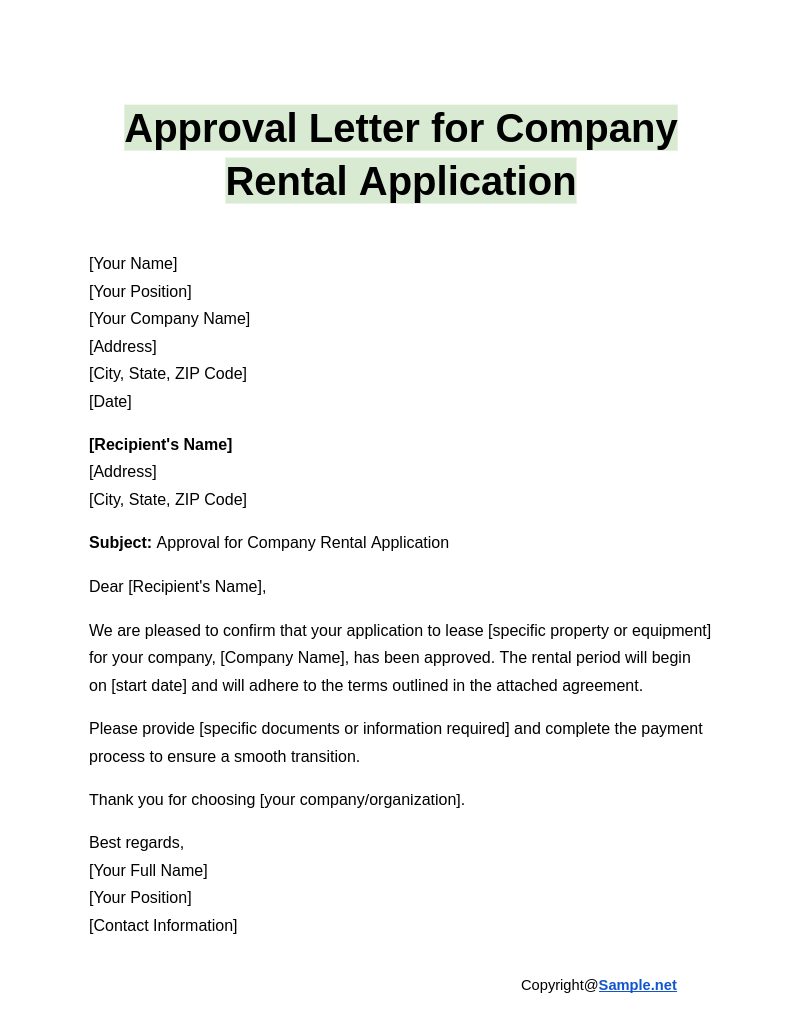
Approval Letter for Company Rental Application
download now -
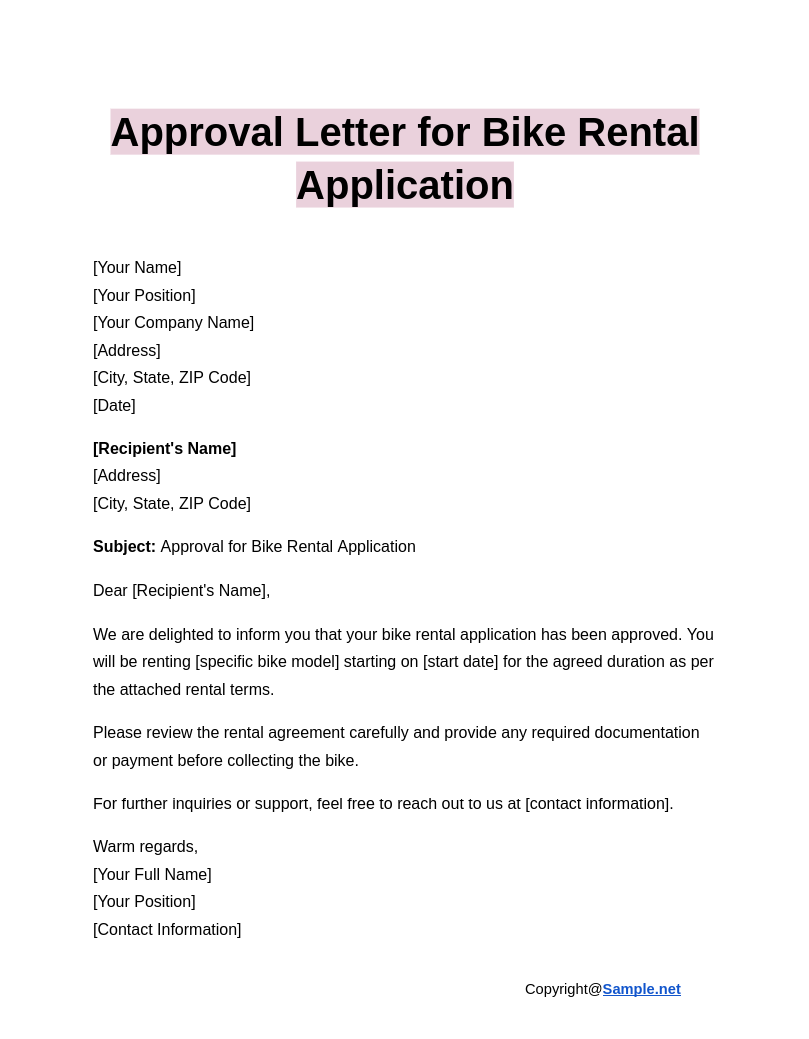
Approval Letter for Bike Rental Application
download now -
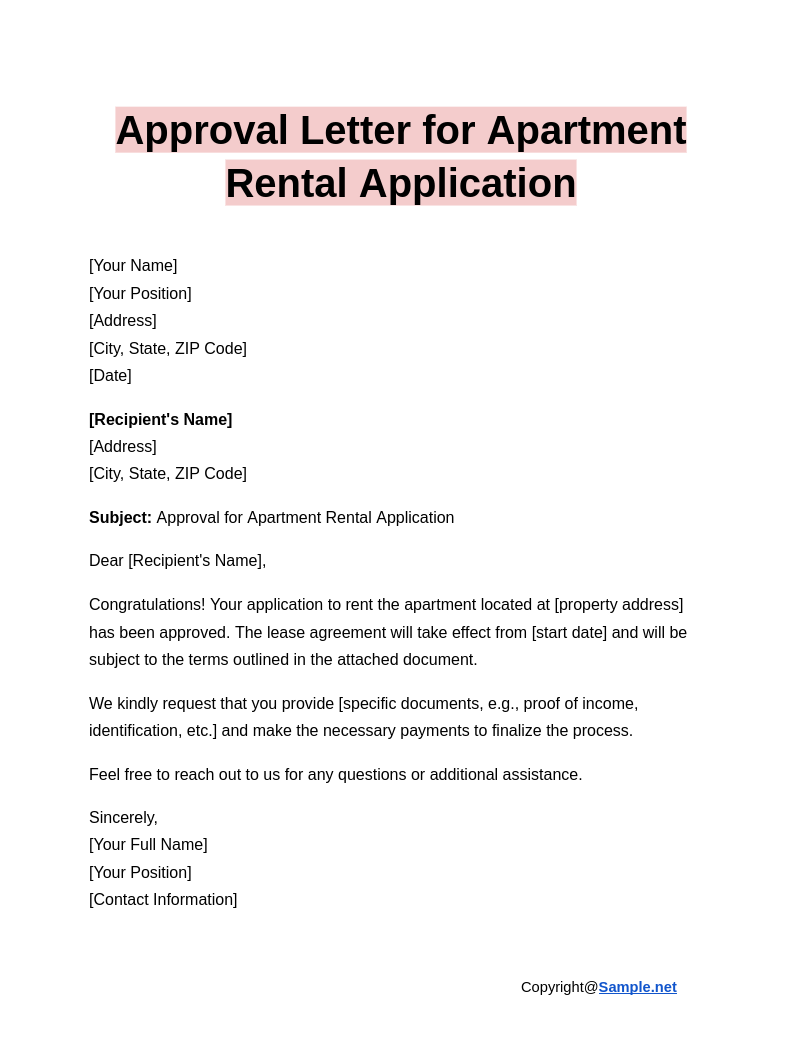
Approval Letter for Apartment Rental Application
download now -
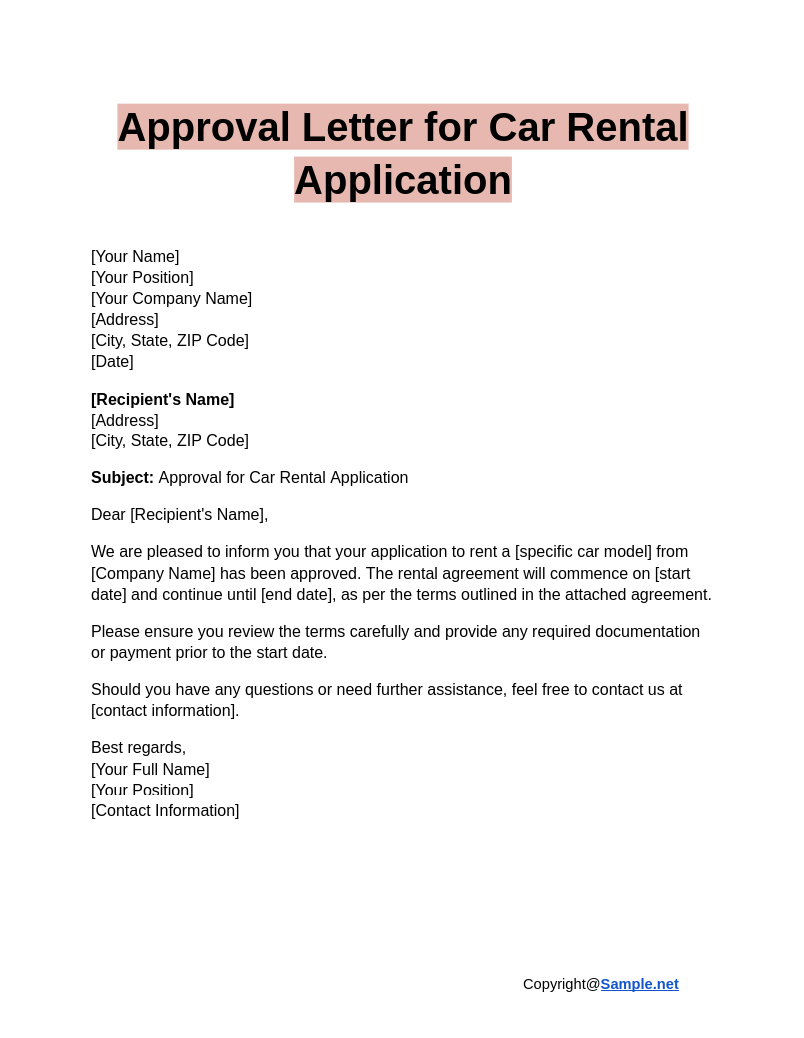
Approval Letter for Car Rental Application
download now -
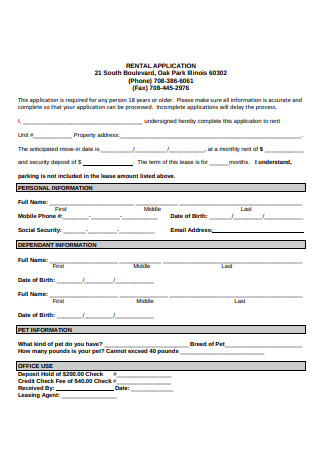
Approval Letter for Rental Application
-

Residential Rental Application
-
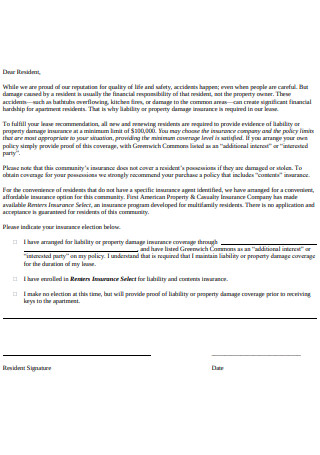
Approval Letter for Resident Rental
-
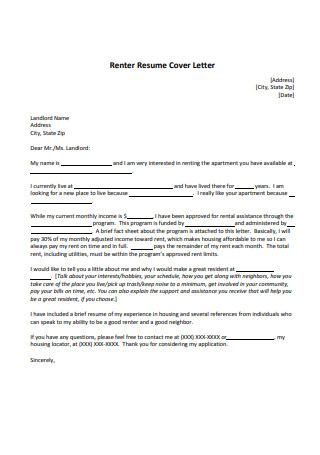
Approval Letter for Rental
-
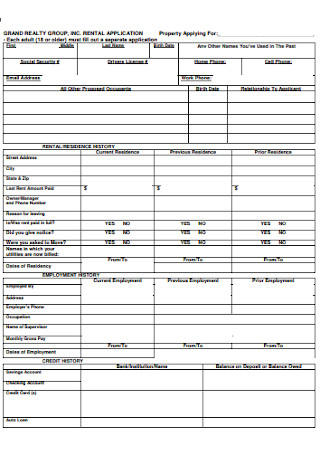
Rental Application and Approval Form
-
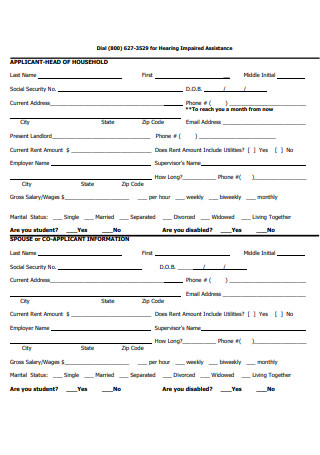
Rental Application for HouseHold
-
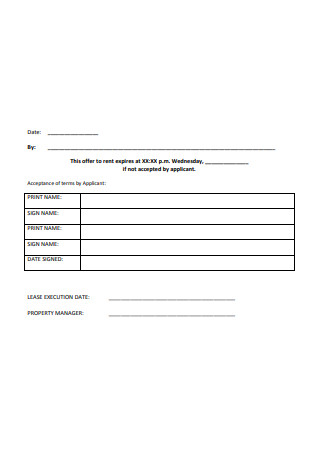
Sample Approval Letter for Rental Application
-

Approval Letter of Application for Residency
-
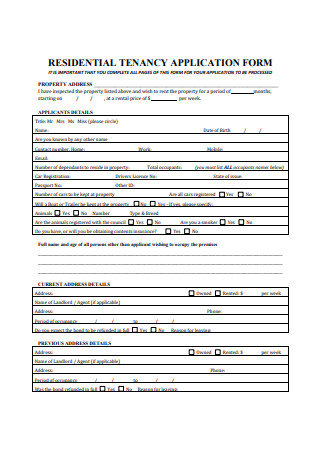
Residential Tenancy Application Form
-
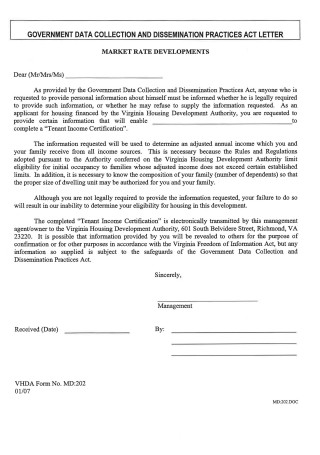
Crest Rental Application
-

Rental Application Approval Process Letter
-
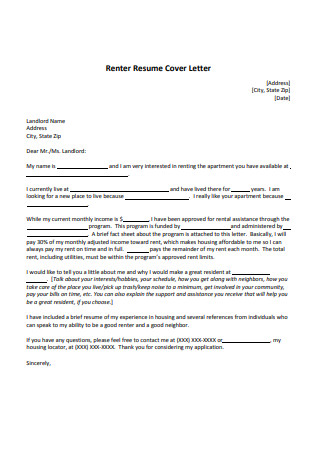
Renter Resume Cover Letter
-

Final Approval Letter
-
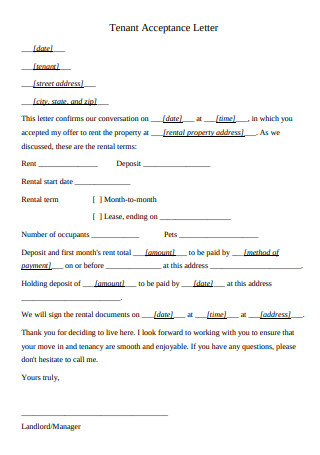
Tenant Acceptance Letter
-
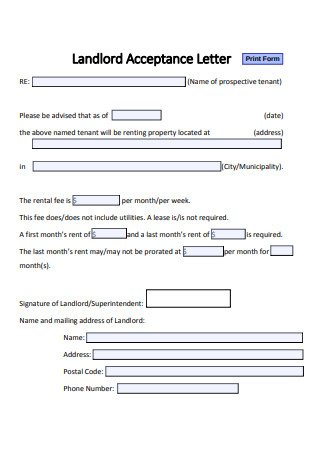
Landlord Acceptance Letter
-

Willingness Cum Acceptance Letter
-
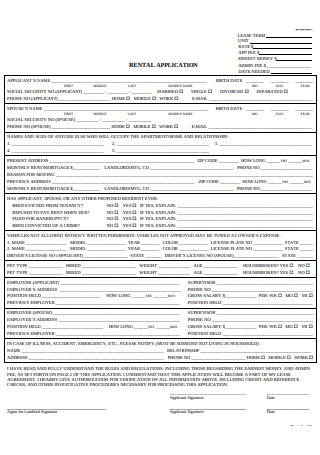
Rental Application Acceptance Letter
-
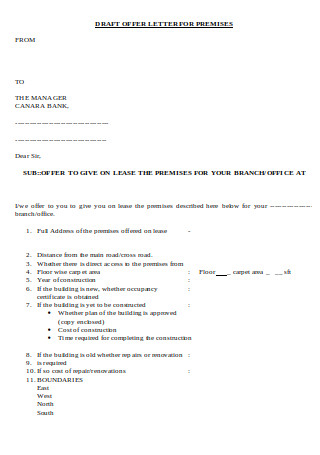
Draft Offer Letter for Premises
-
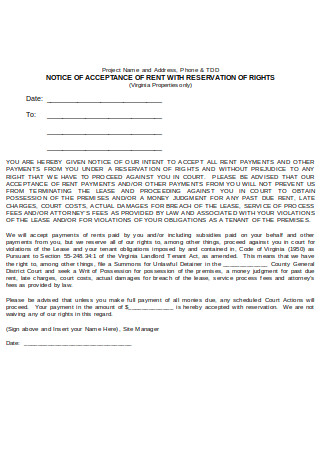
Notice of Acceptance Rent
-
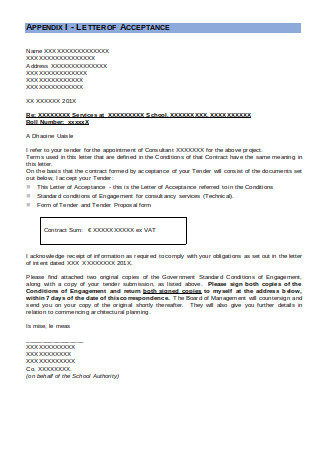
Letter of Acceptance Format
FREE Approval Letter for Rental Application s to Download
Approval Letters for Rental Application Format
Approval Letters for Rental Application Samples
What is an Approval Letter for Rental Application?
Things to Focus on When Writing an Approval Letter for Rental Application
How to Write an Approval Letter for Rental Application
FAQS
What if I receive a rejection instead of an approval?
What if I change my mind after receiving the approval letter?
Who sends the approval letter?
Can an approval letter include conditional terms?
What if the approval letter is unclear or missing information?
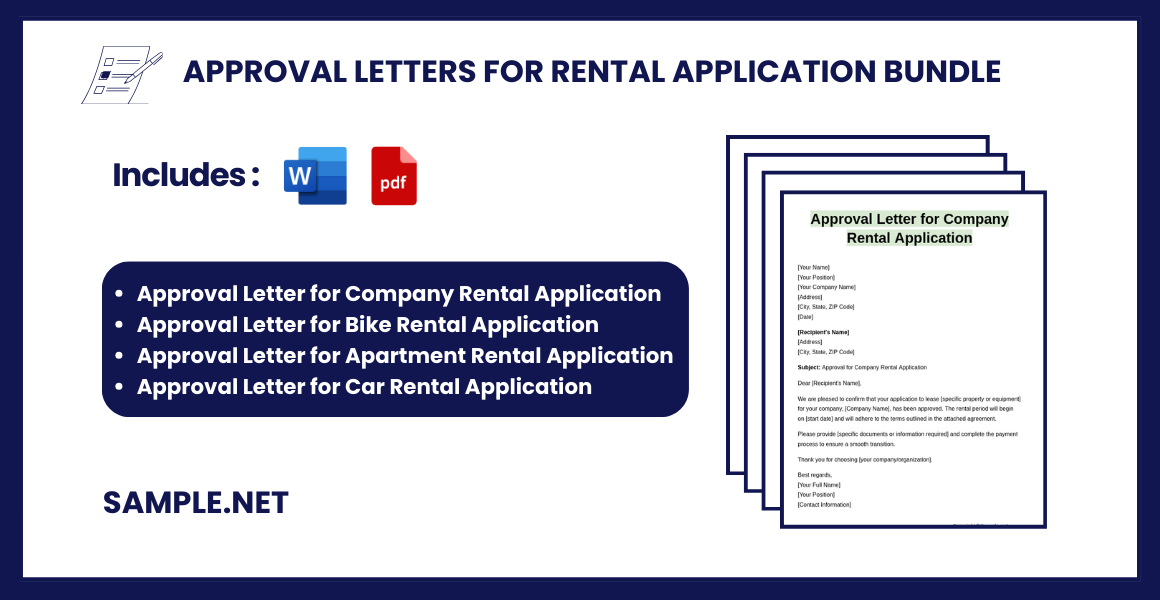
Download Approval Letters for Rental Application Bundle
Approval Letters for Rental Application Format
[Your Name]
[Your Title/Position]
[Company/Organization Name]
[Address]
[City, State, ZIP Code]
[Phone Number]
[Email Address]
[Date]
[Applicant’s Name]
[Applicant’s Address]
[City, State, ZIP Code]
Subject: Rental Application Approval
Dear [Applicant’s Name],
We are pleased to inform you that your application for the rental property located at [Property Address] has been approved. After a thorough review of your submitted documents and information, we are confident that you will make a suitable tenant for the property.
Below are the key details regarding your rental:
- Property Address: [Property Address]
- Lease Term: [Start Date] to [End Date]
- Monthly Rent: [Amount]
- Security Deposit: [Amount] (to be paid by [Due Date])
- Other Charges (if any): [Details]
Please review the lease agreement attached with this letter and let us know if you have any questions. To finalize the process, you are required to:
- Sign the lease agreement.
- Provide the necessary payments (security deposit, first month’s rent, etc.) by [specific date].
If you agree with the terms, kindly visit our office or contact us at [Phone Number/Email Address] by [Deadline for Response] to complete the final formalities.
We look forward to having you as a tenant. If you have any further questions or concerns, do not hesitate to contact us.
Best regards,
[Your Full Name]
[Your Title]
[Company Name]
What is an Approval Letter for Rental Application?
An approval letter for a rental application informs an applicant that he or she is qualified to rent out the property he or she have applied for. The letter also makes it easier for you to inform the applicant regarding the term of the lease, the amount of rent to pay, the time interval, security deposit details, and more. Approval letters not only benefit the applicant, but they also benefit you as the tenant because anything and everything related to tenants must be recorded and kept on file.
Things to Focus on When Writing an Approval Letter for Rental Application
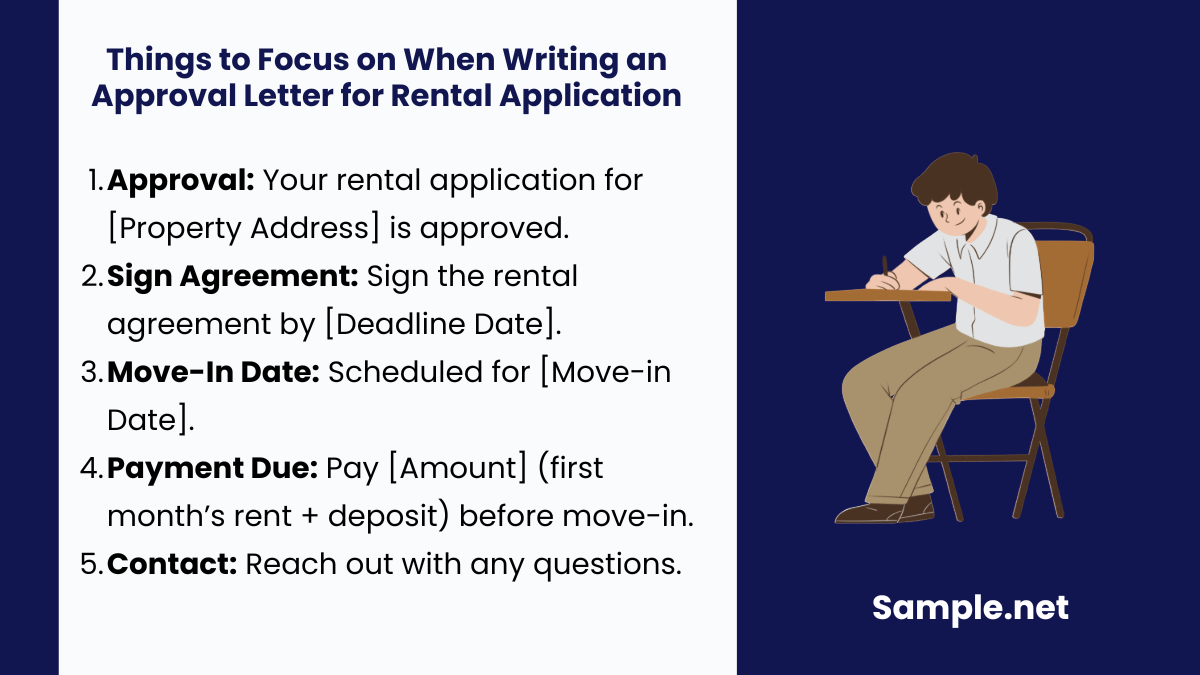
It is already a given that you should write a well-formatted and presentable approval letter for rental application. However, it is better to put the visual presentation of your letter aside and focus more on writing a letter that contains substantial and relevant content. With that, we have listed down the basic things you should consider and focus on when writing an approval letter for rental application. Getting familiar with the following enables you to write the body of your approval letter smoothly. You can also see more on Rental Agreement Letter.
How to Write an Approval Letter for Rental Application

After successfully conducting a tenant screening, you should be able to determine an applicant that meets all your standards of an ideal tenant. To officially inform a tenant that his or her application has been approved, make sure that you issue him or her with an approval letter. But before you start composing one, you first need to get acquainted with the guidelines that can help you in coming up with an effective rental application approval letter.
Step 1: Consider the Use of a Letter Template
While you can start from scratch, you should consider the use of a ready-made template of an approval letter for rental application. When you opt for the use of a template, you can either use it as it is or have something you can something that serves as your basis or a guide when it comes to the format and layout. If you want to use one as it is, keep in mind that not all templates are one-size-fits-all so make sure to check a template first if it contains most of the contents that you would need in a template before downloading it. You can also see more on Letter Of Application.
Step 2: Secure the Basic Details
As with any type of letter, the first things you need to secure are the basic details that should be included on the top part of the approval letter which consists of the date, the inside address, and the return address or the heading. The date should be the exact date when you wrote the letter. The inside address should indicate the full name of the approved tenant and the tenant’s current address. The return address should indicate your full name, your title, address, and your contact details such as your phone or landline numbers and email address. If you have a letterhead template ready, you will no longer have to include type in the inside address.
Step 3: Discuss the Details.
The body of your approval letter should at least contain three paragraphs. Introduce the first paragraph with the salutation and start it off with a simple greeting before you state the purpose of the letter in brief sentences and inform the qualified tenant of his or her successful rental application. The second paragraph should further discuss details such as the rental agreement signing date, the move-in date, security deposit details, etc. More of these details are discussed below.
Step 4: Call the Recipient to Action
The last paragraph of the body of the letter should contain a call-to-action where you encourage further communication with the recipient of your letter. This is the part where you indicate a date that serves a deadline as to when the approved tenant should come and sign the rental agreement. Imposing a deadline is helpful on your end as a landlord because a deadline gives a sense of urgency to the tenant, compelling him or her to answer your letter as soon as he or she receives it.
Step 5: Proofread and Check
Once you have filled out the important parts of your approval letter, it is important that you proofread and check your work before printing and sending it to the approved tenant. When checking your work, look out for errors relating to grammar and spelling as well as mistakes relating to the accuracy of the details. If you think that it already looks perfect, consider taking the time away from your final draft so when you come back to it, you will have a fresh look at the paper. And if you have some time to spare, ask someone who has not read your draft to check its contents for you with completely fresh eyes. You can also see more on Permission Request Letter.
FAQS
What if I receive a rejection instead of an approval?
A rejection letter usually outlines the reasons for denial, such as credit issues or insufficient income. You may request further clarification or ask if there’s an opportunity to reapply.
What if I change my mind after receiving the approval letter?
Inform the landlord or property manager as soon as possible. Be aware that some landlords may keep a portion of your deposit if you back out. You can also see more on Authority Letter.
Who sends the approval letter?
Typically, the landlord or the property management company sends the approval letter to the prospective tenant.
Can an approval letter include conditional terms?
Yes, some approval letters may include conditions such as proof of renter’s insurance, payment of the security deposit, or confirmation of employment.
What if the approval letter is unclear or missing information?
Reach out to the landlord or property manager for clarification and ensure the missing details are addressed before signing the lease agreement. You can also see more on Rent Increase Letter.
